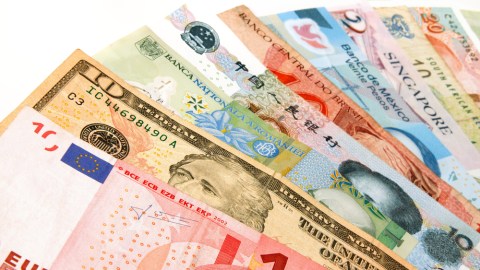Don’t Close Taxpayers Wallets too Fast

News of ongoing economic uncertainty surrounds us. In delivering his semiannual monetary policy report to Congress recently in Washington, U.S. Chairman Ben Bernanke urged drastic reduction in the government’s long-term deficit. “The United States is on an unsustainable fiscal path looking out over the next couple of decades.” The same day, 25 European leaders signed a new fiscal path to promote spending discipline. Spain has announced that deepening recession meant it would abandon deficit-reduction targets for the year. The European Central Bank has injected €1 trillion ($1.3 trillion) into banks in recent months. This has been alongside a provisional agreement on a second package of loans for Greece worth €130 billion ($172 billion).
Will taxpayer wallets remain open – with this drumbeat of global belt tightening, to development aid outside their borders? Why would the public fund projects in Asia, Africa, or elsewhere – when sitting down to the dinner table they face end of the day worries about day-to-day lives?
I argue that now more than ever it is important to invest in areas where we have evidence that aid matters. We owe taxpayers (who ultimately fund national and multilateral donor agencies) rigorous evidence that a particular intervention – with public money has a chance to work. This rigorous evidence provides us a better understanding of what developing-country governments need to spur economic growth and reduce poverty.
Are there specific areas where aid appears to be effective? Yes, there are a number of such investments – and aid for trade is one of them. Trade benefits all the world’s consumers and taxpayers through expanding access to lower cost goods and services. Aid can help expand trade.
World Bank research (Helble, Mann, Wilson 2011) suggests that indeed it does. Relatively small amounts of aid targeted at policy and regulatory reform (in contrast to aid for broad trade development projects or trade-related infrastructure) have a greater impact with respect to increased trade flows. One dollar of aid for trade facilitation translates into $71 of exports for countries receiving aid.
Ferro, Portugal-Perez, and Wilson (2011) evaluated the impact of foreign aid to five service sectors and found that aid to transport, energy, and banking sectors have consistently a significant and positive impact on downstream manufacturing exports. Aid to the transportation sector was less effective (in terms of export growth) for countries with higher incomes, while aid to the energy sector and business services was more effective the higher income the country was.
These findings suggest that economic growth could be effectively stimulated through a targeted aid for trade agenda that emphasized trade facilitation investments with the highest returns – specifically those reforms associated with trade policy and regulation. Ongoing discussions from donors and governments on how to coordinate and monitor trade-related aid should consider these results in order to strengthen aid effectiveness.
There are pundits who say that even if research shows that aid for trade is effective, the inefficient donor system could never coordinate to place aid money in the right places. Ferro and Wilson 2011 analyzed whether aid targets areas that firms in developing countries have identified as obstacles for their growth. Their analysis revealed that aid does target the areas that firms have identified as obstacles, and that for the most part, aid has a positive impact on improving firms’ perceptions, particularly in the business environment.
Gains in understanding the long-term impact of aid for trade measures are being made as well. The trade assistance community is beginning to put develop tools to apply impact evaluation tools (usually reserved for the fields of health and financial services) to trade assistance (for more on this, see a new book recently published by World Bank colleagues). Trade matters, and we know that expansion of global trade can drive economic growth.
We are making gains working to help cut poverty. Research released last month by the World Bank showed that in every region of the world, the percentage of people living on less than $1.25 a day and the number of poor declined from 2005 to 2008. With 1.29 billion people in 2008 living below $1.25 a day (about 22% of the population in the developing world), the outlook remains cautiously optimistic. Now is not the time to close taxpayer wallets, especially in aid for trade.





